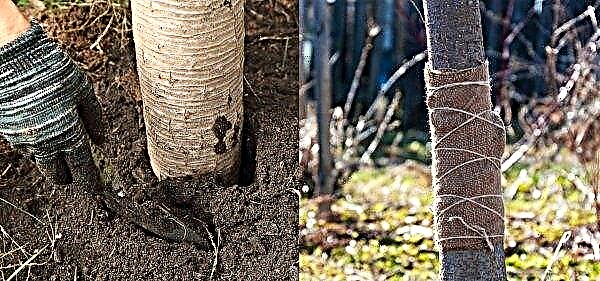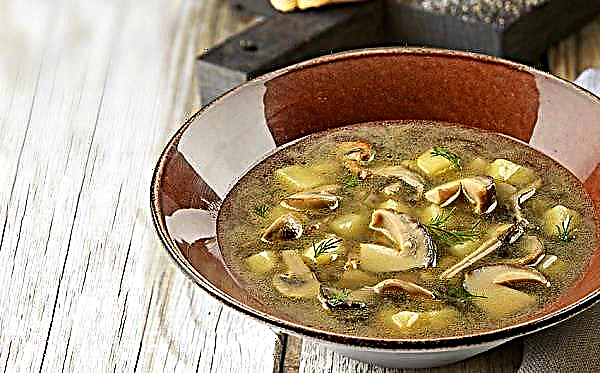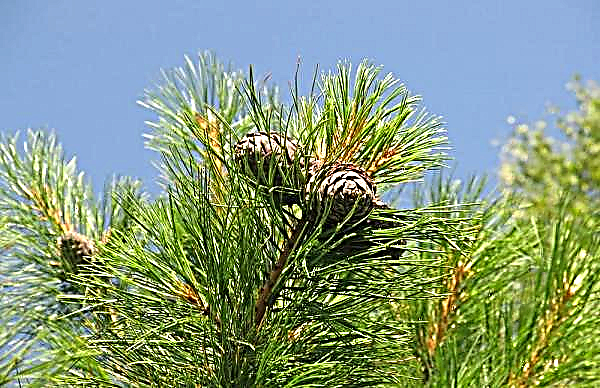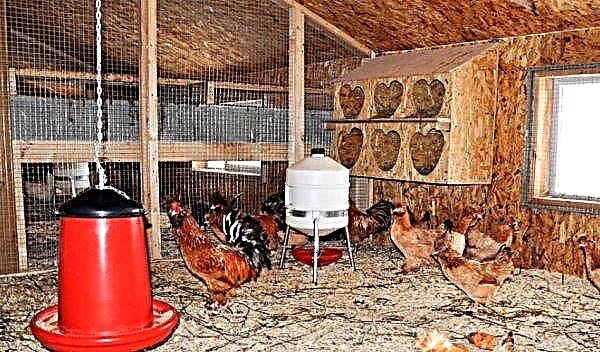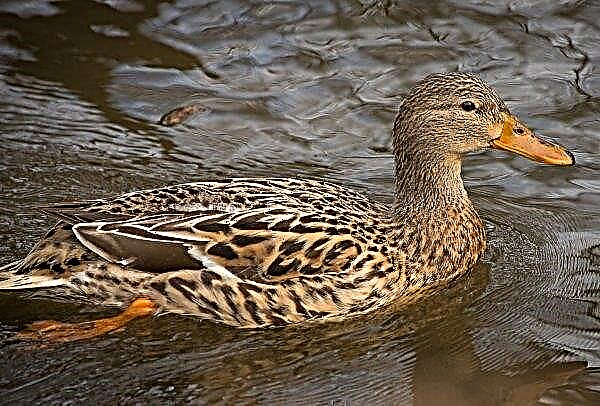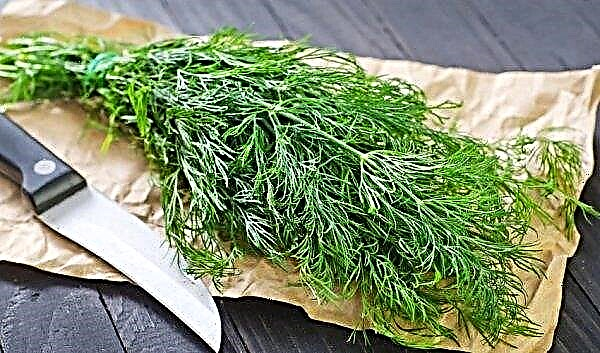Tulip is an unspoken symbol of spring, because it is customary to give the fair sex on International Women's Day. Meanwhile, this is not only a good gift, but also an excellent plant for summer cottages and landscape design. This material discusses one of the most popular plant varieties - Dynasty.
Botanical grade description
Dynasty (Dynasty) is an early flowering variety of the Dutch species Triumph. Large buds have the classic shape of a glass with a height of up to 9 cm and a diameter of up to 6 cm. The stems are powerful and have a height of about 45 cm, upright, cylindrical.
Did you know? The homeland of tulips is not Holland at all, as is commonly believed. These flowers appeared in Central Asia.
The leaves are oblong, elongated, with a wide leaf plate and pointed upward. Depart from the stem in turn, on the surface there is a slight waxy coating.
The buds may have the following colors:
- white;
- yellow;
- pale pink;
- ash pink;
- pink-red (fuchsian);
- purple.
In any shade, the flowers of this variety have their own distinctive feature - the edges of the petals are slightly “powdered” with lighter tones. In a bisexual flower, six petals invariably grow. Flowering begins in early May and lasts about two weeks.. The roots of the Dynasty tulip annually die off, leaving formed bulbs.
Growing Features
The plant is quite unpretentious and grows well and blooms in non-acidic fertile soil in open areas. According to the description, it is responsive to top dressing and moderate watering.
Important! You can not plant tulips in the soil, where there is stagnation of rainwater or groundwater is located close to the surface.
Landing rules
Planting is done in the fall, at the end of September - in sandy or loamy soil. A month before planting, the site should be well dug up and humus added at the rate of a bucket of 1 m². Bulbs should be planted to a depth of about 10 cm at a distance of 10–20 cm from each other (depending on their size). A layer of sand (up to 2 cm) is laid at the bottom of the groove, where the bulb is fixed. Landing can be done in early spring, immediately after snowbut then flowering will occur later and the buds will be much smaller.
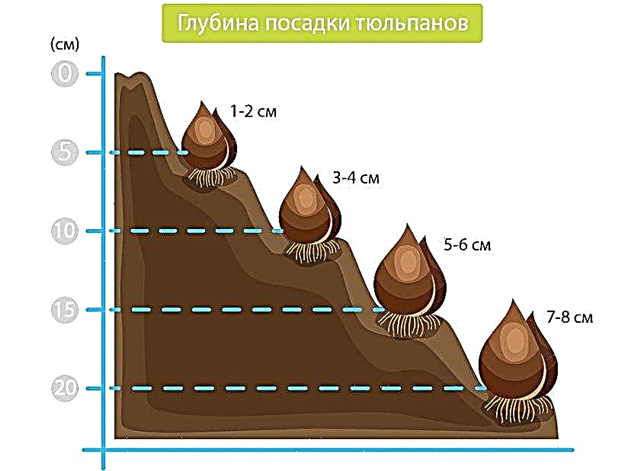
The subtleties of care
Caring for the Dynasty is not much different from other species. When the first spring shoots appear, it is necessary to examine the sprouts and remove the weak and painful ones - this will accelerate the forcing of the remaining ones. Frosts will not harm plants, but you must definitely loosen the soil around the seedlings.
When watering tulips adhere to such rules:
- you need to water early in the morning or late in the evening;
- water for irrigation should be settled and cool;
- basal watering from a watering can is used so that the drops do not fall on the leaves;
- up to 20 l of water is used per 1 m²;
- you can dig special grooves along the beds for accurate watering;
- after watering, the soil near the plant must be loosened to get air to the roots and evaporate excess moisture;
- at the end of flowering, the frequency and volume of irrigation is halved.

Fertilizer is applied three times during the growth of tulips: in the spring before germination, at the formation of buds and at the end of flowering. It can be any fertilizer for flowers that do not have chlorine in their composition. All manipulations are performed in strict accordance with the instructions for the tool.
Important! If organic fertilizers were used (humus, compost, etc.), then the introduction of mineral fertilizing can be eliminated or minimized.
Reproduction of the Dynasty variety (and other tulips), as mentioned above, is carried out by bulbs. They are dug up around the end of June, when the aerial part of the plant turns yellow, and the bulbs themselves turn brown. In order for the flower to direct all its forces to the qualitative formation of the bulb, after flowering seed baskets are removed.
The dug planting material is dried in the open air in a shaded place for 1–2 weeks. After that, it is treated with fungicides and stored in a cool, dry place until spring.
Video: How to dig and store tulips
Pests and diseases
The most dangerous disease is considered the so-called August, which leads to necrosis of the tulip tissue. To prevent this disease, it is enough to sort the bulbs and reject spoiled and injured ones.
August sickness manifests itself in the form of longitudinal dry stripes on foliage, while the bulb begins to rot. If such a flower is found, it with the roots is removed from the site and burned to the side. The place where the diseased tulip grew is treated with a fungicide.

Another disease that can affect tulips is white rot, manifested on the roots in the form of a milky coating with subsequent transformation into brown putrid spots. This is facilitated by planting in acidic soils, where seedlings are overcome by a disease that often does not even allow seedlings to appear.
Spores of white rot are tenacious and are not determined during a routine inspection of planting material. In this case, it is necessary to go a different way - first of all, to properly prepare the soil, which will prevent the development of pathogenic disputes. Neutral soil is treated with the Carbation fumigator 4–5 weeks before tulip planting. If a diseased plant is found, it is removed along with a lump of soil.
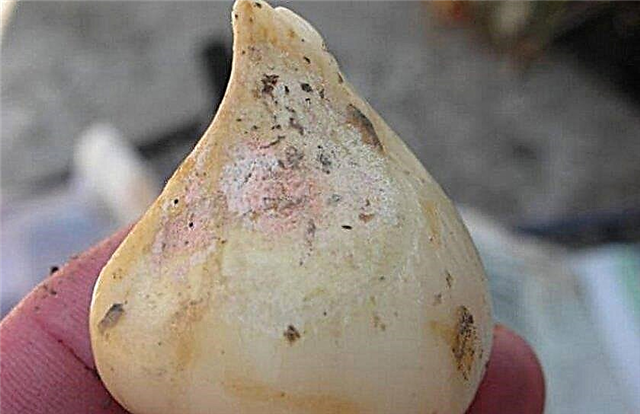
Due to the early growth and flowering of pests, the aerial parts of tulips do not - they manage to bloom to the active phase of life of various insects. But the bulbs are susceptible to attacks by both insects and rodents:
- Leaf scoop. The larvae of this parasite can destroy a developing plant. To avoid this, it is necessary to constantly weed the weeds on which scoops develop.

- Root onion tick. Damages the root material, leaving brown dust on the surface. In the form of prevention, a thorough inspection of planting material before purchase and soaking the bulbs in a 0.3% solution of insecticides like Rogor or Celtan helps.
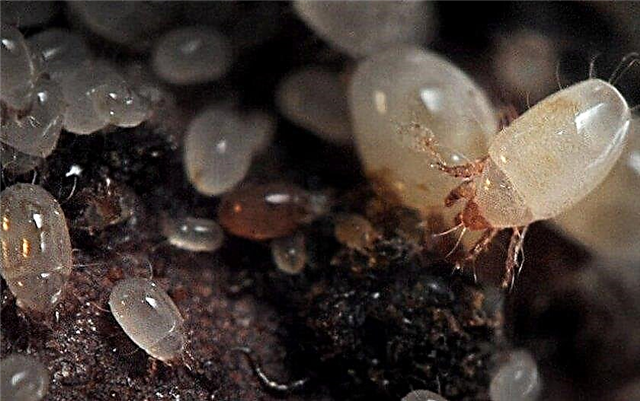
- Chafer (larva) loves the juicy stems and roots of a tulip. So that he does not harm the future flowering flower bed, before planting, you need to dig the soil and manually remove the pest larvae.
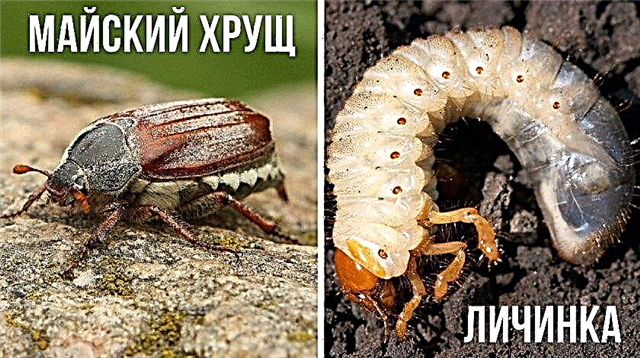
- Medvedka. This large and powerful insect breaks passages in the immediate vicinity of the soil surface. If traces of the bear’s activity are found, it is necessary to dig the soil deep with turning the reservoir. You can also arrange traps made of plastic, polystyrene or plywood.
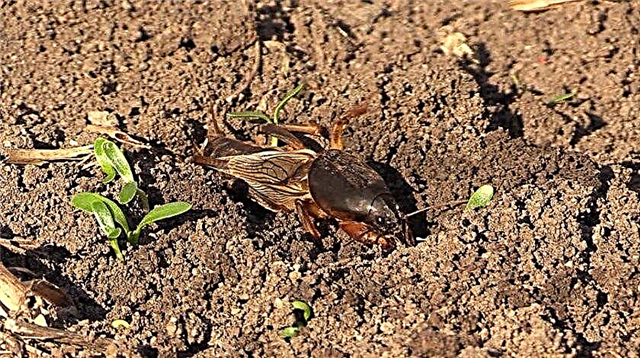
- Harvest mouse. These rodents gladly enjoy the roots of the plant, not only in the field, but also during storage. To prevent this from happening, traps are set, poison is laid out, and planting material is sprinkled with iron minium for storage.

Use in landscape design
The landscape design of both small plantings and entire slopes, hills and fields suggests a difference in color, appearance and height of plants. Tulip Dynasty, having a powerful flower and stem, is great for complementing compositions in height and color.
Did you know? Petals of tulips are edible. They can be used instead of onions in salads, for pickles or in gravy to garnishes.
It can be a spectacular descent to the lake, where the height of the flowers is getting smaller. Also a well-considered variety will look in hollows with ornamental shrubs and small trees. The Dynasty looks beautiful on the legendary tulip fields.

The Dynasty variety will decorate a personal plot - a powerful plant will harmonize well with higher or lower flowers with contrasting colors. In garden designs, this glassy tulip is generally irreplaceable - delicate colors and large buds will not leave indifferent visitors to city parks.






